AAC block is a type of lightweight, precast building material that is commonly used in construction. AAC blocks are lightweight, which makes them easier to handle and transport, reducing construction time and labor costs.
In this article, we talk about what is AAc block and all the benefits and features.
If you are looking to import AAC block from Iran to your country, Manalex is the right choice!
leave your number and we will contact you shortly.
what is AAC block?
AAC (Autoclaved Aerated Concrete) blocks are a type of lightweight precast concrete building material. They are also sometimes referred to as aerated concrete blocks or aircrete blocks. AAC blocks are manufactured through a process called autoclaving.
AAC blocks are known for their lightweight, insulating, and load-bearing properties, making them a popular choice in construction, particularly for walls, partitions, and other structural elements.
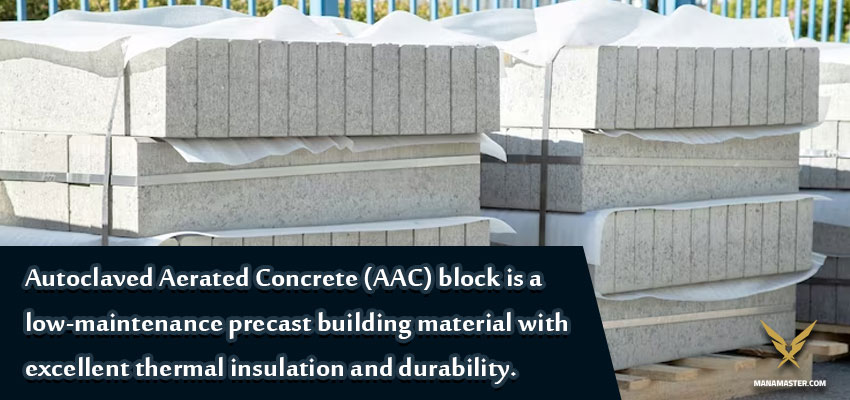
What is AAC block made of?
What is AAC block made of? AAC (Autoclaved Aerated Concrete) blocks are made from a combination of several key ingredients, including sand, cement, lime, aluminum powder and water.
The manufacturing process of AAC blocks involves mixing sand, cement, lime, and aluminum powder, which reacts with the calcium hydroxide in the mixture to create hydrogen gas. This gas expands and forms numerous small air bubbles throughout the mixture. After mixing, the material is poured into molds and cured in an autoclave (a high-pressure steam chamber) to harden and strengthen the blocks.
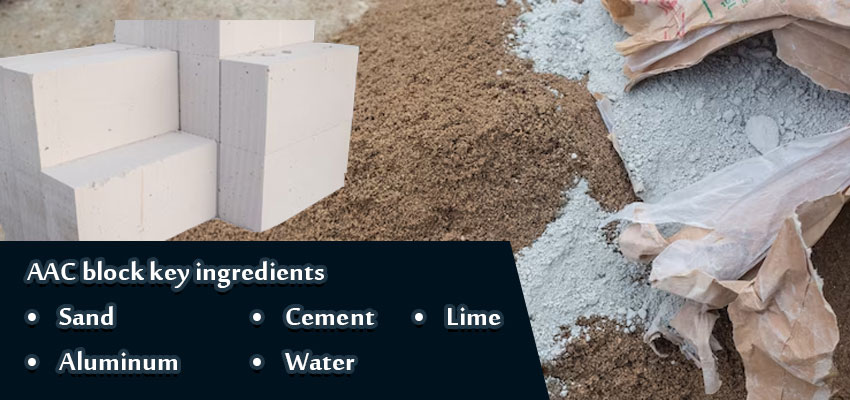
12 Advantages of AAC blocks
What is AAC block advantages? AAC blocks have gained popularity in construction due to their many advantages, including energy efficiency, ease of construction, and environmental sustainability. They are commonly used in residential, commercial, and industrial building projects.
- Lightweight: AAC blocks are significantly lighter than traditional concrete blocks or bricks. This makes them easier to handle, transport, and install.
- Insulating Properties: AAC blocks have excellent thermal insulation properties due to the presence of tiny air pockets within the material. This helps in maintaining a more consistent indoor temperature and reducing energy consumption for heating and cooling.
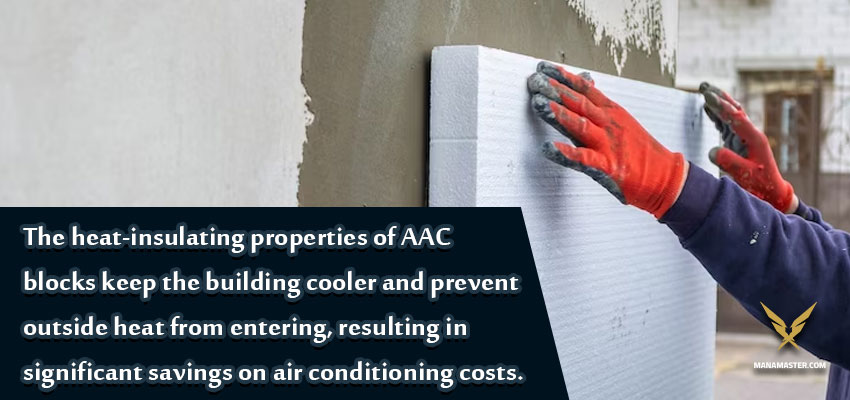
- Strength: Despite their lightweight nature, AAC blocks are structurally strong and can bear significant loads. They are often used for load-bearing walls and other structural applications.
- Fire Resistance: AAC blocks are highly fire-resistant, offering improved safety in case of a fire. They do not emit toxic fumes when exposed to high temperatures.
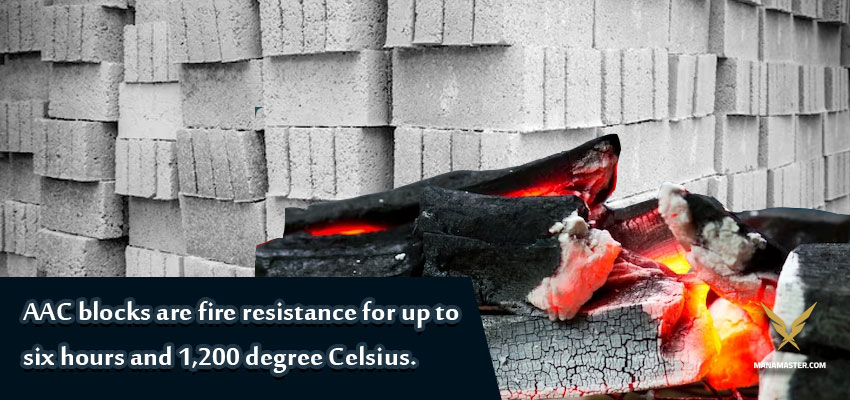
- Sound Insulation: AAC blocks also provide good sound insulation, making them suitable for applications where noise reduction is important.
- Environmentally Friendly: AAC blocks are considered environmentally friendly because they use less raw material compared to traditional concrete blocks, and the manufacturing process produces fewer greenhouse gas emissions. Additionally, AAC blocks can often be recycled.
- Versatility: AAC blocks come in various sizes and shapes, making them versatile for different construction needs. They can be easily cut or shaped on-site to fit specific requirements.
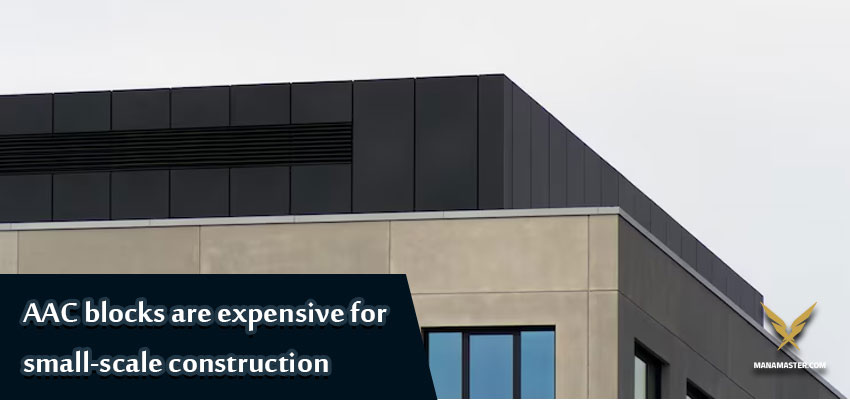
- Durability: When properly installed and maintained, AAC blocks are durable and resistant to pests, mold, and rot.
- Energy Efficiency: The thermal properties of AAC blocks contribute to energy efficiency in buildings, reducing the need for heating and cooling. This can lead to lower energy bills for occupants.
- Speed of Construction: AAC blocks are relatively easy to work with, and their lightweight nature speeds up the construction process. This can result in reduced labor costs and faster project completion.
- Pest Resistance: AAC blocks are naturally resistant to pests, such as termites, due to their composition, making them a suitable choice for regions where pest infestations are a concern.
- Design Flexibility: AAC blocks can be used for a wide range of architectural designs and styles. They can be easily finished with various surface treatments, such as plaster, paint, or cladding.
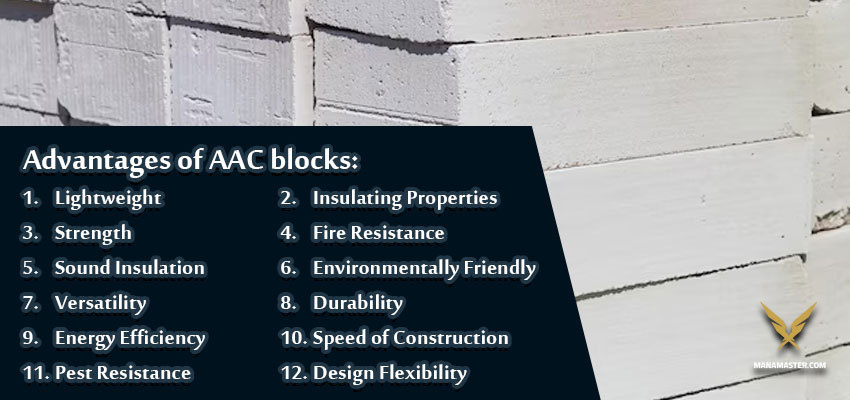
conclusion
Overall, AAC blocks offer a combination of insulation, strength, and sustainability, making them a preferred choice for modern construction projects, especially in areas where energy efficiency and environmental considerations are important.
Looking for a reliable company to import AAC block from Iran to your country?
leave your number and we will contact you shortly.
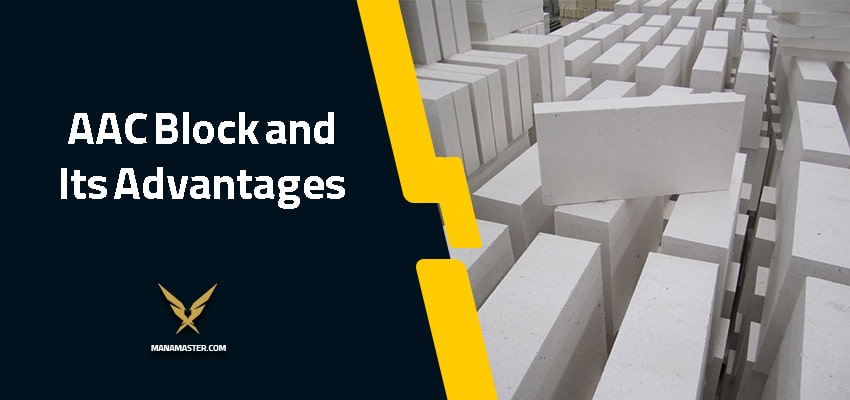
Hello! I’m considering options for building materials and I can’t choose between concrete blocks and AAC blocks. Can you tell me which one is better?
Hi there! To answer this question, we need to consider factors such as the project, budget, structural needs, and desired properties like insulation and weight.
As a general rule, AAC blocks are more expensive than concrete blocks. For more information, just put your number. Our team will contact you.
Hi, I am considering AAC blocks for a construction project. Could you provide details on their fire resistance and soundproofing capabilities?
Hi there! AAC blocks have a high fire resistance due to their inorganic composition. This feature can make them non-combustible.